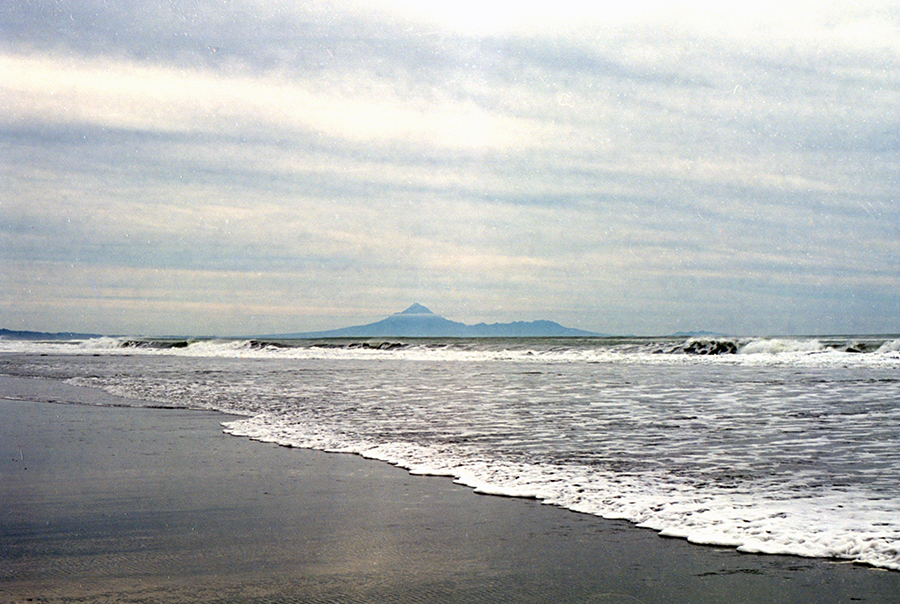
Around Ngā Motu

The future of Taranaki
The region encircling one of our most distinctive geographical landmarks is uniquely positioned to make an economic transition.
As one of Aotearoa’s energy and dairy centres, producing both white and black gold, Taranaki has played a foundational role in our country’s economic development. However, like much of the country, the region is now in the midst of a rocky transition that’s equal parts nerve-racking and exciting.
Kelvin Wright is chief executive of Te Puna Umanga Venture Taranaki (VT), the regional development agency aimed at fostering Taranaki’s future prosperity. “We don’t have exhaustive funding to drive or deliver stuff ourselves,” he says, “but it is in that catalyst, connector, translator role that we get people together.” Taranaki’s 2050 roadmap has four central priorities: energy transition, food and fibre, tourism, and tech/ innovation. Developing these pathways has meant leaning into what makes Taranaki unique: the region’s strong entrepreneurial philosophy and engineering expertise.
Historically, the energy sector has supported a high-income lifestyle contributing to a rich cultural environment with an affordable cost of living. In 2018, the Labour government announced a block on offshore oil and gas exploration permits, which Wright says “politicised the energy sector”, creating uncertainty. There’s substantial interest in offshore and onshore renewables — Meridian has just announced a major South Taranaki wind, solar and battery project covering some 5000 hectares — but apprehension around commercial and regulatory viability.
“The challenge,” says Wright, “is balancing Taranaki’s options for a more sustainable economy going forward with the workforce’s appetite to have good, well-paid jobs and maintain the lifestyles that they’ve had for decades.” The tourism and tech and innovation developments cohere largely around ensuring that the region can remain an appealing place to live and visit.

Zieltjes’s role is driven by the fact that the Mounga Project never wanted to be the one entity looking after the mountain. “We didn’t want to build one house of cards”. Instead, it sought to back a range of entities. As the co-project director, working with scientist Sera Gibson (Te Atiawa, Ngā Ruahine and Te Arawa), Zieltjes’s role involved maintaining some semblance of coherence, following the relationships formed with different iwi authorities, hapu and community organisations or individual farmers, to stitch together that mosaic.
When it started, Zieltjes says, two individuals regularly checked traps on the mounga. In eight years, the network has expanded threefold and is 70 per cent volunteer-managed. He talks about a vet named Pete he knows in Ōkato, who looks after some trap lines on Kaitake with what used to be six mates. Now it’s about 80 people, “basically the whole community”.
This collaborative approach has been key to the project’s success thus far; a willingness to avoid dwelling on disagreements and instead work out how Zieltjes and his team can connect individual projects into an effective network of solutions. When he hits a roadblock, Zieltjes knows he can call Pete up, or many locals like Pete, and ask, “You’ve got this knowledge, how would you approach this problem?”
On the immediate horizon for the Mounga Project is the treaty redress going through for Taranaki Mounga, a legislative framework that sets the future direction for Zieltjes’ organisation, especially around legal personhood. “The legislation puts a really clear focus not just on biodiversity, ecology and restoration, but how the community connects with and has that depth of relationship with Taranaki Mounga.”
Sean Zieltjes grew up locally and says that living in Taranaki means, “Whether you’re Māori or Pākehā, you’ve got all six fingers and you love your mountain.”
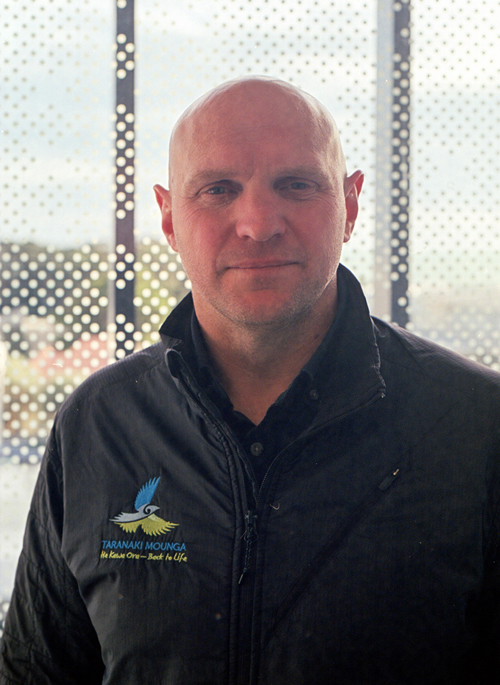
Restoring our mounga
Sean Zieltjes, pouārahi taupua/acting project director on the Mounga Project, grew up locally, and says that living in Taranaki means, “Whether you’re Māori or Pākehā, you’ve got all six fingers and you love your mountain.”
The Mounga Project is a collaboration between the Department of Conservation (DOC), Taranaki iwi Chairs forum and philanthropic investors Next Foundation and Toi Foundation that started in 2016 when Next and DOC identified Taranaki Mounga (“mounga” is a Taranaki iwi spelling/pronunciation of “maunga”) as one of a dozen biodiversity “life rafts”.
Because Taranaki locals identify so closely with their mounga, the theory was that if the involved organisations invested to achieve some transformational ecological change, then the community would get stuck in themselves to maintain those biodiversity gains over a longer period. As Zieltjes puts it, “The more you care about something and the more you understand something the more you’re gonna look after it. The second you put a DOC200 trap out in the bush and it starts trapping predators, it makes a demonstrable positive impact on the environment.”
The project’s scope covers 34,000 hectares of Te Papakura o Taranaki national park, including Taranaki, Pouakai, Kaitake and the Ngā Motu/Sugar Loaf Islands. And, nearly nine years in, it’s seeing results.
For one, it has supported the eradication of goats, establishing New Zealand’s first ungulate-free national park. Zieltjes says that this achievement was mostly finishing up some work that had been happening for a long time. The Mounga Project offered a bit of project-management rigour, meaning that the skilled hunters involved were supported to finish off the job. “And then the guys got it done”.

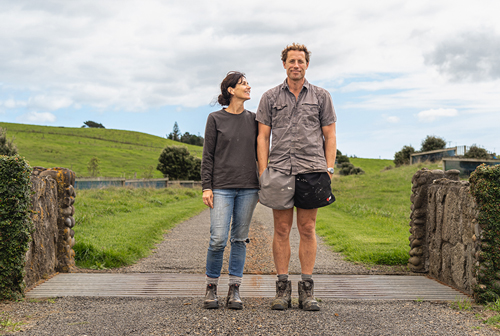
Each day is different on a farm
Vanessa Dickie is one Taranaki farmer who understands the value of diversification.
“Part of being a farmer,” Dickie tells North & South, “is that you do so many different things at any given time.” One day she might be in the fields calving, the next day painting the house and the day after putting on business clothes to head into Whanganui for a meeting.
Dickie and her husband Ben moved to Waverley two decades ago, after years in Sydney, Auckland and Wellington, becoming the fifth generation of Ben’s family to run the farm. It was predominantly a dairy operation when they took over. They faced a steep learning curve.
It remains a dairy farm, but they’ve since branched out, finding more imaginative uses for their land.
About 12 years ago, they decided to get a small flock of Gotland sheep — known for their soft, varied fleece and tender meat — to feed the family. The flock has since grown to one hundred lambing ewes, creating a successful business selling sheepskins under the name Three Sticks Gotland Sheepskins.
Gotland sheep are rare in Aotearoa, meaning the skins, with their luxuriant softness and brilliant tonal variety, are highly coveted. Dickie hand cuts and brushes each sheepskin at the farm, and is proud to be able to supply four stockists while keeping every part of the process 100-per-cent natural and within the North Island.
Five years ago, the couple started planting mānuka as a chance to further diversify and grow something on the land that would be sustainable. This year alone they’ve planted 30,000 trees, bringing the total land use to eight hectares.
The family now sells high-end mānuka oil under the skincare brand “That’s It”. It was important to Dickie that they make a product that she, her husband and their kids wanted to use. A favourite product is a wool blister patch infused with mānuka oil: a double-whammy of antimicrobial power.
Dickie takes North & South through to the distillery, built with the help of an engineer she found through Country Calendar. The mānuka is heated in giant drums, the steam captured and the oil then skimmed off. The leftover mulch feeds the family’s fruit trees.
“We really love what we do,” Dickie tells North & South. She pulls out a jug of pure Mānuka oil — which produces an astonishingly thick, entrancing smell. They’ve also just distilled their first batch of kānuka oil, with a distinctly sweeter aroma, which Dickie compares to bananas.
Since arriving 20 years ago, Dickie and her family have done much to become self-sufficient. They have their own eggs, milk, meat and fruit, and have recently opened an old shearers’ shed to AirBnB.
Asked what brings people to Waverley, she says, “the peace”. Vanessa sleeps much better here than she ever did in the city.
The Future of Education
Within 10 minutes of arriving at the Green School, a pedagogical paradise nestled beneath the Kaitake Ranges, North & South finds itself in “the hot seat”, a chair where a class of primary-school kids ask any questions they like for a whole two minutes: What’s the scariest thing that’s ever happened to you? What’s your opinion on African elephants? How long have you been at your current job?
Relishing this grilling is Michael Perrett, who co-founded Green School New Zealand (GSNZ) with his wife Rachel. It’s a point of satisfaction for the Perretts that students at the school are comfortable talking to adults, asking them questions and offering their opinions as equals. Michael’s proud of the self confidence they’ve worked hard to foster.
When he greets us at reception, his enthusiasm for what he and Rachel have achieved is palpable. Their journey, filled with challenges and triumphs, has brought them to nearly five years in operation, with around 100 students from years one to 13, split evenly between domestic and international. In the past year applications have doubled.
We begin our tour of the facilities by walking along the rustic central path, which Michael explains was reconfigured to follow the “desire paths” students formed intuitively, replacing the original landscape planners’ designs. Michael and Rachel proudly show us the half-pipe their son built — possibly the only untagged half-pipe in all of Aotearoa.
In one of the classrooms, a teacher is running a class on time travel. He asked his students where and when they would travel. The kids have brainstormed a mind-map of considerations that includes language, technology, health and science. One group of kids is exploring England during the Hundred Years’ War, while another other is focusing on ancient Mexico during the Mayan empire. Matua Matt uses this choice as a jumping-off point to talk about how America waged a war against Mexico and took its land. The kids are comfortable, but not unnervingly precocious — they’re still kids.
GSNZ is part of the global Green School movement, an innovative, environmentally conscious approach to education that aligns closely with te ao Māori values in Taranaki and Aotearoa. It is running a trapping programme, has released kiwi into the bush, and is working with farmers upstream to clean the river that runs through the property. It is also New Zealand’s first “destination” international school, which Kelvin Wright says has introduced many exciting, innovative thinkers to Taranaki’s tech communities.
Built on the site of a 100-year-old dairy farm, the school itself is an architecturally and environmentally stunning space designed to inspire the leaders of tomorrow with compassion and environmental consciousness. The campus includes a permaculture garden, learning and co-working spaces, a green camp for visitors, the tallest wooden structure in New Zealand and as little concrete as possible.
Recently, the faculty started letting the kids run the assembly. In all honesty, Perrett admits, the first time it wasn’t very good. The second one got a bit inappropriate. But by the third — he smiles — things started to gel, and the benefit of getting these 11-year-olds to use their own initiative fell into place.
It’s all learning, he laughs. Originally the basketball courts were gravel, but once proper courts were installed, the students began competing much more effectively against local schools.
As idealistic as this might sound, GSNZ is founded on rigorous academic values. As Perrett puts it, it’s all well and good to teach a class down by the river, but first, you have to teach the child the basics of chemistry and biology so they can get something tangible from that experience.
The school has completed numerous international and domestic accreditations and qualifications. Two recent successes were the acceptance of its High School Diploma (Advanced) meeting the requirements for entrance to Universities New Zealand Te Pōkai Tara, and gaining NZQA accreditation.
These major milestones for the school brought validation for learners and their families and certainty that a GSNZ education can lead to further tertiary opportunities both in New Zealand and internationally.
To the Perretts, this is what the future of education could look like. The students at the Green School are just getting to experience it a little early.

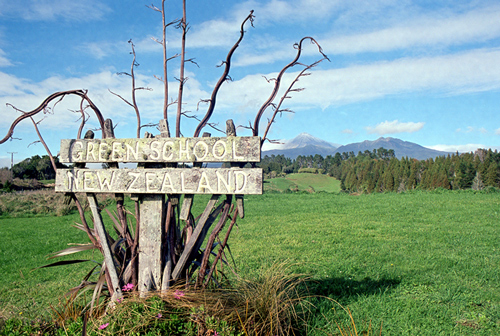
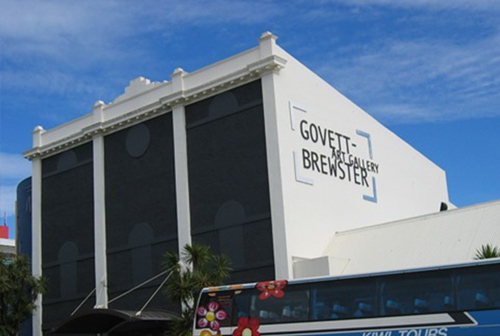
Cultural Experiences
Zara Stanhope is wearing a lot of hats right now. She is transitioning to leader of New Plymouth District Council’s new Cultural Experiences team while still serving as Director of the Govett-Brewster Art Gallery and Len Lye Centre, and co-curating an upcoming exhibition. Despite this unified oversight, the organisations involved maintain their individuality. The gallery is still a contemporary art gallery, and the home of Len Lye, and Puke Ariki remains Taranaki’s museum and libraries organisation.
“This is already a very rich, historical and cultural part of the country. How can we elevate that and tell those stories and both enable them to get out and be accessed but also make these really, really comfortable places for people to come into and engage with, whether it’s history, our natural world, our taonga and toi?” asks Stanhope.
At the Govett-Brewster Art Gallery and Len Lye Centre, priorities include deepening relationships with ngā iwi o Taranaki artists, creating exhibitions and performances with Pacific artists and communities, supporting artist residencies and working with the galleries’ collection and archives on research and exhibitions that address contemporary life.
As Stanhope tells North & South, the Govett-Brewster has been historically fortunate to be known for artists developing their projects in close association with the local community and through residences.
“We’ve continued that focus over that time since I’ve been here, to make sure that we can host artists here in any way that they want to spend time.”
Last year, the Govett- Brewster hosted four indigenous artists from Taiwan who visited for two weeks meeting Māori contemporary artists and travelling to Waitangi among other destinations. Their exhibition will be cocurated with Taarati Taiaroa in July.
At Puke Ariki, efforts focus on extending hapū and iwi relationships, refreshing long-term displays, maintaining the popular programme of changing temporary exhibitions, and showcasing Taranaki Research Centre archives.
Stanhope feels lucky to be in this position, with a sense of shared purpose between Ngāmotu’s cultural organisations and the wider city council — “looking to be a greener place, a cleaner energy place, and very much focusing on upholding its communities”. This reset is a chance to “take a breath and look around… Where do we want to go together now? How are we going to offer excellent service to our communities and what will that look like?”
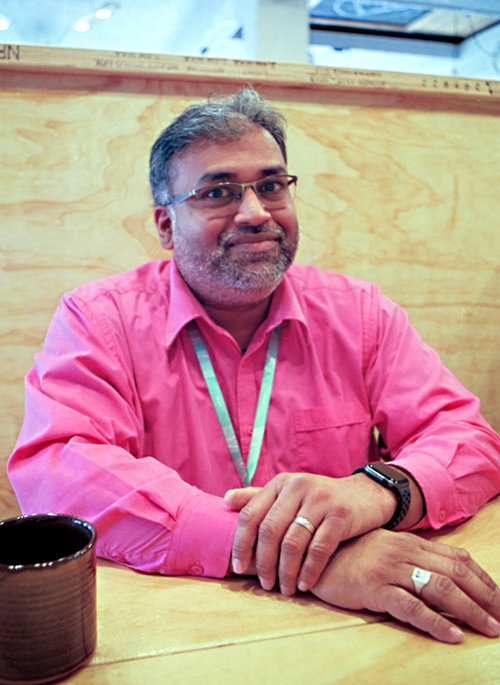
Ngāmotu: The Trinidad of New Zealand
“There’s two primary types of hot sauce in New Zealand,” Avin Panchorie, co-founder of Fire Down Below, tells North & South. “Sweet chilli, which I respect but, personally, despise, and the blow-your-face-off stuff, which is fine if you like extreme sports.”
In his bright pink button-up, Panchorie is a chatty guy with a passion for pepper sauce. He and his wife Candice moved their family to Ngāmotu five years ago, when Candice was transferred from Methanex Trinidad to Methanex New Zealand.
Not knowing a single soul, homesickness quickly set in, and Avin and Candice decided to make a batch of the Trinidadian-style hot pepper sauce that is a staple of every dinner table back home. The base of the sauce is carrots, a Caribbean specialty that lends sweetness and body.
By day, Avin works as an engineer, currently at OMV. But in his free time, he’s working on Fire Down Below. Having produced 185 batches and thousands of litres, he’s known around town as the hot pepper sauce guy. New Plymouth is a lot like Trinidad, Avin says, in that everyone knows everybody else.
Making the sauce has given him a chance to meet more of the community, as he delivers bottles locally by hand — well, not exactly. In Trinidad, you never hand someone a bottle of hot pepper sauce directly. To do so is a sign that you’ll have a falling out down the line. It’s not like he believes this superstition, he tells me, before pausing with a laugh. Actually, he does seem to believe it, at least enough to have designed a paper carrier bag for his sauces to ensure they never gets passed hand-to-hand.
If you’re reading this and planning to order a bottle or two Avin recommends trying it the first time with cheese. The reason, he says, is that although Kiwis don’t know pepper sauce they do know cheese, so it works as a good neutral sampler. Subtract the cheddar, and you’ll taste the zingy, citrusy, spicy pepper sauce.
Taranaki is buzzing with innovation, culture and strong community spirit. Sure, everyone puts their best face on when a visitor comes to town but the evidence was material. From the pioneering educational model at Green School New Zealand to the dynamic cultural initiatives under the NPDC’s new Cultural Experiences team and the vibrant entrepreneurial spirit of locals, Taranaki exemplifies a forward thinking, inclusive place to live and grow. It’s not just keeping pace with the future but actively shaping it, providing inspiration and opportunities for everyone who calls it home.


